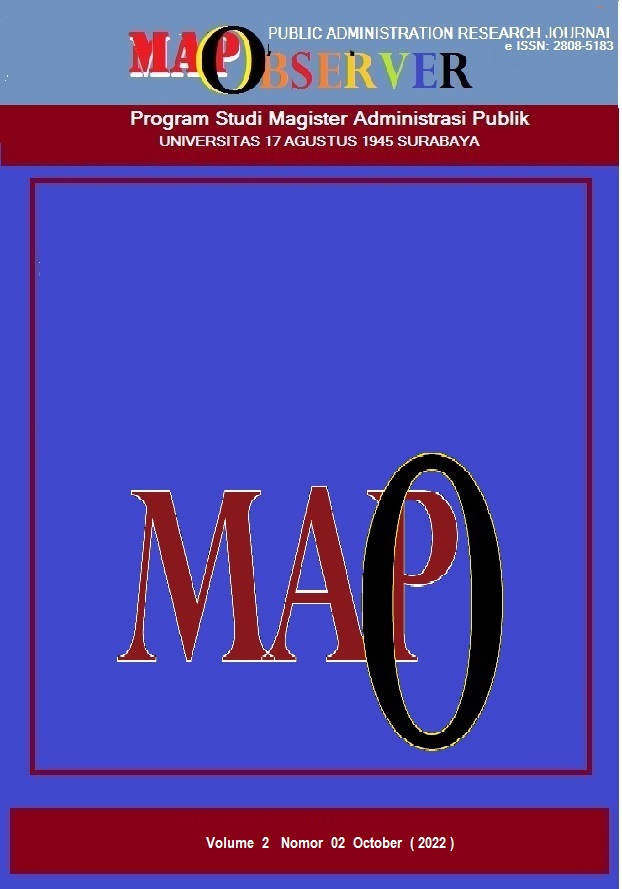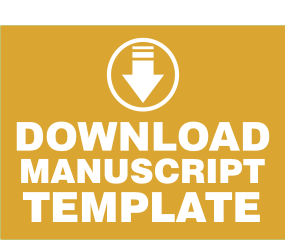IMPLEMENTATION OF ONLINE BIRTH CERTIFICATE SERVICES THROUGH THE CLAMPID AT THE CANTIAN DISTRICT OFFICE OF CANTIAN SURABAYA CITY
Abstract
Public service is the fulfillment of the basic rights of citizens by the government, one example of public service is population administration such as administering birth certificates. Pabean Cantian Sub District as the organizer of population administration, especially birth certificates by utilizing technology via Klampid on the E-Kios machine, which is an electronic media that functions to facilitate services to the community. The purpose of the study was to determine the application of birth certificate services via Klampid at the Sub District Office of Pabean Cantian, Surabaya City and to find out what the supporting factors and inhibiting factors were. The type research used is descriptive qualitative method. Meanwhile, the focus of the research is using the concept of the Surat Keputusan MENPAN Nomor 63 Tahun 2003 concerning the Principles of Public Service. The results showed that the implementation of Birth Certificate Services via Klampid at the Sub District Office of Pabean Cantian, Surabaya City was in a good category on the indicators of Simplicity, Security, Responsibility, Time Certainty, Discipline, Politeness and Hospitality, while the indicators of Completeness of Facilities and Infrastructure were still not good.
Downloads
References
Idrus, M. (2009). Metode Penelitian Ilmu Sosial. Yogyakarta: Erlangga.
Ishaka, M. (2020). Analisis Implementasi Kebijakan Terhadap Pelaksanaan KepMENPAN NO. 63 TAHUN 2003 Dalam Pelaksanaan Pelayanan Kebutuhan Dasar Masyarakat di Kota Bima NTB. Jurnal Ilmiah Administrasi Negara, 16(1).
Klampid.(http://dispendukcapil.surabaya. go.id)
Setiawan, G. (2004). Implementasi Dalam Birokrasi Pembangunan. Jakarta: Balai Pustaka.
Surat Edaran Walikota Nomor: 360/3324/436.8.4/2020 Mengenai Kesiagapan Stakeholder terkait Adanya Corona Virus Disease 9 (Covid- 19) di Surabaya
Undang-Undang Nomor 25 Tahun 2009 tentang Pelayanan Publik
-
The MAP Observer journal allows authors to retain the copyright of their papers without limitation. Authors may grant publishers non-exclusive publishing rights to publish articles. Granting first publishing rights to publishers also qualifies as unlimited copyright (because there are no restrictions imposed by publishers on author copyright).
-
Formal legal provisions for access to digital articles from these electronic journals are subject to the terms of the Creative Commons Attribution-ShareAlike (CC BY-SA) license, which means MAPO Observer Journal has the right to store, change formats, maintain in a database, maintain and publish articles without asking. permission from the Author as long as the Author's name is the owner of the Copyright.
-
Printed manuscripts and electronic publications are open access for educational, research and library purposes. Apart from these purposes, the editorial board is not responsible for violations of copyright law.





